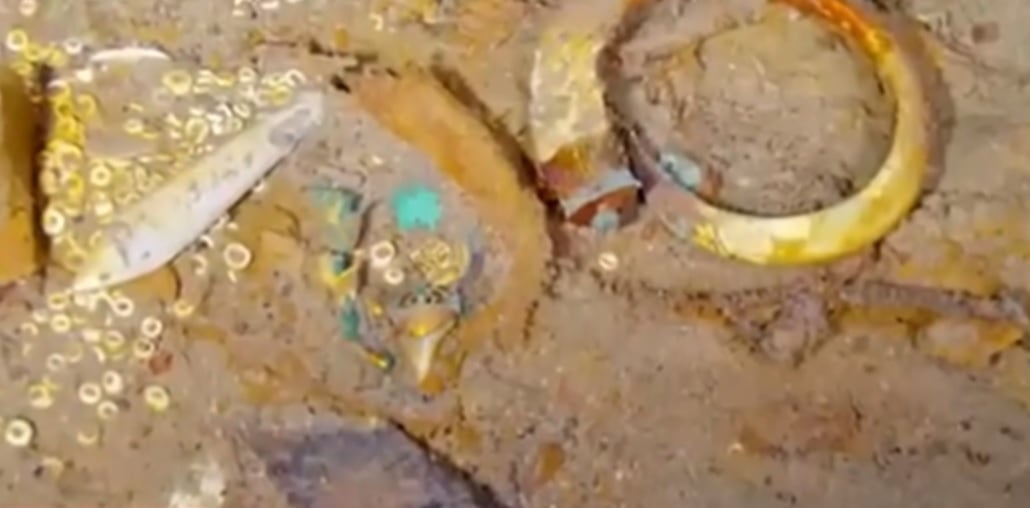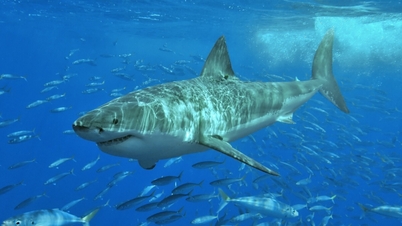For more than 100 years, the necklace has been at the bottom of the ocean after the Titanic sank in 1912, according to CNN on May 31, citing an announcement from the deep-sea mapping company Magellan Ltd (headquartered in the British territory of Guernsey).
Images from the Titanic scan show a gold necklace with teeth from a megalodon, a prehistoric shark that lived more than 23 million years ago. Megalodons were faster than any shark alive today and were so large they could eat a killer whale, also known as an orca, in just five bites.
The discovery of the necklace is "incredible, beautiful and spectacular," according to Richard Parkinson, CEO of Magellan.

The megalodon tooth necklace is depicted in the center of this image.
The shark tooth necklace was discovered by Magellan during a project to create a full-size digital scan of the Titanic, the largest underwater scan in history.
Details of the project were announced about two weeks ago. The project was launched last year by Magellan and British company Atlantic Productions.
Revealing complete 3D image of Titanic wreck
The team of experts used a submersible for more than 200 hours to conduct 700,000 scans to record the most complete image of the Titanic wreck, according to The New York Times .
The Titanic is in two parts, with a lot of debris lying around. Some scans show statues, unopened bottles of champagne and shoes on the seabed. The images are so detailed that the serial number of one of the propellers can be seen.
The Titanic sank in about 2 hours and 40 minutes after hitting an iceberg on April 14, 1912 while en route from Southampton (England) to New York (USA), killing 1,503 people, becoming the most famous maritime disaster of the 20th century.
Source link


























































![[Maritime News] Wan Hai Lines invests $150 million to buy 48,000 containers](https://vphoto.vietnam.vn/thumb/402x226/vietnam/resource/IMAGE/2025/6/20/c945a62aff624b4bb5c25e67e9bcc1cb)














![[Infographic] Party Committee of the Ministry of Culture, Sports and Tourism: Marks of the 2020 - 2025 term](https://vphoto.vietnam.vn/thumb/402x226/vietnam/resource/IMAGE/2025/6/22/058c9f95a9a54fcab13153cddc34435e)




























Comment (0)